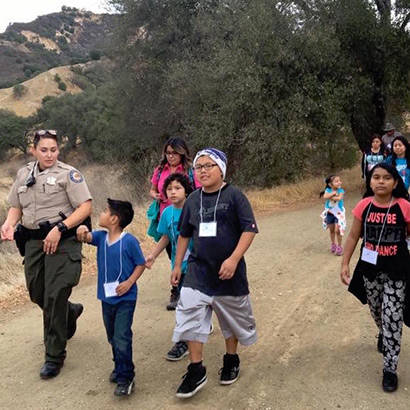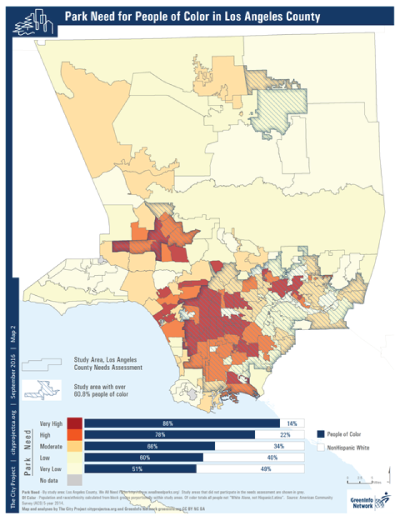
People across Los Angeles County are celebrating the recent passage of Measure A, the Safe, Clean Neighborhood Parks and Beaches Protection Measure of 2016. Measure A is expected to generate approximately $94 million per year for local parks, beaches and green space areas, replacing previous voter-approved park funds that were running out.
Measure A prioritizes funding for the communities with the greatest needs pursuant to the countywide needs assessment. Communities of color and low-income communities disproportionately have the greatest needs for more parks, more park facilities and improved park conditions. This is demonstrated by demographic analyses and mapping by The City Project with GreenInfo Network, coupled with the May 2016 Los Angeles Countywide Comprehensive Parks & Recreation Needs Assessment, conducted by the County Department of Parks and Recreation.
We all must work together to ensure the funding is actually invested in the areas with the greatest needs. Planning by and for the community, standards and data based on the Needs Assessment, and making data publicly available through annual audits as funds are actually invested, are needed to measure equity and progress, allow for midcourse corrections, and hold officials accountable. This will help ensure compliance with civil rights and environmental justice laws, and equal access to parks and recreation for all.
The City Project and GreenInfo Network mapped and analyzed the Needs Assessment with data based on race, color, national origin and income. People of color disproportionately have the highest park needs, as shown in the bar chart on the map below. The greater the park needs, the higher the percentage of people of color. Areas of Very High Need are 86 percent people of color compared to areas of Very Low Need, which are 51 percent people of color. The darkest color shows "Very High” park needs. The hash marks identify more people of color than the county average.
Click on the map to view a larger image.
The Needs Assessment generally does not show very high need areas at the beach in the map above. That does not mean there is no need to reach the beach. Transit to Trails, President Obama’s Every Kid in a Park, and similar transit and educational programs are needed to take people who live in very high need areas on fun, educational and healthy trips to beaches, parks, rivers, mountains and deserts. Virtually every agency that has considered it supports transit to park programs such as Transit to Trails and Every Kid In a Park.
Education and interpretation materials about the people and places are needed to give the people a sense of belonging — the people belong in the parks, and the parks belong to the people. Transportation programs alone are not enough.
Lessons from prior funding for parks and recreation demonstrate the need for planning, standards, data analyses and community engagement. These lessons from prior state park bond measures apply to Measure A.
Funds were not invested fairly under the County’s prior park measures — Prop A which voters passed in 1992, and Baby A in 1996. County supervisorial District 3 on the west side received more than twice as much funding per person ($164 per person) compared to District 1 on the east side ($70 per person), according to the available data. District 3 is disproportionately non-Hispanic white and has more park space, compared to District 1. According to a county official, District 3 received three times as much as District 1. That’s backwards, and that’s not fair.
As demographics change, parks need to change to meet the needs of the people. California’s Latino population, for example, is projected to grow from 38 percent in 2010 to 45 percent in 2040. Millennials, those born between 1980 and 2000, constituted 29 percent of California’s population in 2010 and represent the largest generation in history. In 2010, 46 percent of millennials were Latino and 51 percent of 12-years-olds were Latino. People of color and low-income people are consistently the biggest supporters of park and resource bonds in California. They vote, and they need to receive their fair share.
The City Project looks forward to working together with the County, the people of Los Angeles, and other community-based organizations advocating for equal access to parks to ensure that all of our residents have access to healthy, livable communities.
Robert García is an NRPA Board Member and Founding Director and Counsel of The City Project.
Cesar De La Vega is the Juanita Tate Social Justice Fellow and a graduate of Stanford Law School ’13 at The City Project.


